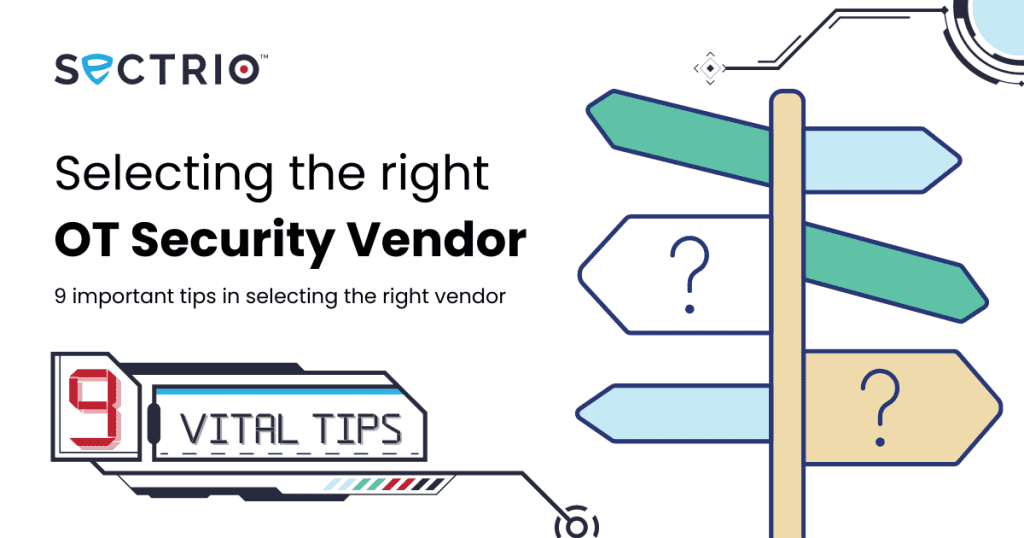How to overcome OT security threats?
Let’s find out what gives OT security experts the creeps. Most of the times, the issues are associated with IT. The duties of the Chief Information Security Officer (CISO) change and expand along with the industrial Internet of Things (IIoT) and operational technology (OT). The CISO must eliminate threats posed by warehouse systems, networked machinery, and smart devices dispersed over hundreds of workstations. Maintaining safety in industry, oil and gas facilities, public utilities, transportation, civic infrastructure, and other areas is necessary for managing those security concerns. By 2025, analysts estimate that there will be some 21.5 billion IoT devices linked globally, greatly expanding the attack surface. CISOs require novel mitigation techniques for IIoT and OT risks since embedded devices frequently lack patches, which differ in important ways from information technology (IT) vulnerabilities. The organization’s leadership team and board of directors (BoD) need to be aware of the distinction. IIoT and OT are now at the forefront of cyber threat management due to costly production disruptions, safety failures resulting in injuries or fatalities, environmental damage resulting in liability, and other potentially devastating scenarios. Addressing 5 cybersecurity threats to OT security Operational technology (OT) used to be a specialty network that IT professionals didn’t bother with, or maybe felt they didn’t need to. That made sense for a time since OT networks often operated on esoteric operating systems, were hidden by air gaps and were segregated from IT processes. Then, because of improved performance, increased output, and ultimately financial benefit, organizations in every area related to energy and vital infrastructure began connecting to IT networks. Networking, remote control, and wireless communication were all the rage, and from an administrative standpoint, it made it logical for IT and OT to be combined. OT rapidly ceased to be the secure backwater that everyone had imagined it to be. Also Read: How to get started with OT security Organizations and authorities now have to deal with the cybersecurity consequences of this. Even though real-world examples of serious compromise are few and far between, attacks on Florida water treatment facilities and energy infrastructure in Ukraine serve as stark reminders that things may change drastically very quickly. The number of OT-connected systems and devices is rapidly expanding, encompassing everything from telematics and robotics to personal technologies like the Internet of Medical Things, as well as supervisory control and data acquisition (SCADA), manufacturing execution systems (MES), discrete process control (DPS), programmable logic controllers (PLCs), and more (IoMT). The challenge is how organizations should tackle the security problem anew when doing nothing is not an option as isolation is eroding as these systems are connected to regular IT networks. Established security vendors have filled the void by adding more layers to their systems, but experts have also started to appear on the scene. What steps could organizations take to better handle the OT security issue? 1. Security Flaws in IT Attackers now have a wide range of targets to choose from if they want to take advantage of software flaws in OT. In the past ten years, this category of flaws has risen quickly from absolutely nothing to a list that is no longer manageable to recall off the top of one’s head. For begin, Armis’ white paper on the subject says the following: A new vulnerability in Schneider Electric Modicon PLCs, which might allow an authentication bypass leading to remote code execution on unpatched equipment, was revealed by Armis in July 2021. The most major actual assaults against SCADA and ICS OT to date, including Stuxnet and Triton, have all been conclusively linked to state-sponsored espionage. The last firm on our list, Colonial Pipeline, is telling since it was an ordinary ransomware assault on the IT system that compromised its invoicing capabilities rather than the OT network itself which caused the company’s operations to be halted. Therefore, there are two issues here, the largest of which is the connection between OT and IT, which is detrimental to the former. OT equipment flaws are a secondary source of vulnerability that is exploited only under certain conditions. Depending on the OT context, there are a variety of hazards associated with basic IT issues like credential theft. The ICS environment won’t be in danger from a compromised credential or RDP since there are so many layers of segmentation in place; just because you enter the IT environment doesn’t imply, you’ll also enter ICS. However, by just seeing someone’s network, we may determine who has considered this problem and who has not. Also read: Why IoT Security is Important for Today’s Networks? In addition, in the few instances where segmentation has not been successfully done, programmable logic controllers (PLC) may communicate to printers and there is no role-based access control. Anyone with access to a VPN could essentially access any network location. What are the main channels from IT to OT for infection? According to Norton, “Infected laptops belonging to maintenance engineers, USB sticks, an unauthorized wireless device, or even a malevolent insider” are among the causes of infection. 2. OT appliances don’t execute antivirus It may seem apparent, but OT devices cannot run a traditional security client for several reasons related to their architecture and history. As a result, an agentless strategy must be used to obtain visibility on what is happening on an OT device via different methods. The strategy used by various organizations suggests looking straightforward enough: observe network activity without interfering with production. It functions essentially as a network TAP in OT contexts. It develops an inventory based on the network traffic it is passively monitoring. In addition to having the assets, we need to monitor their usage to create a profile of behaviors. Ironically, the OT team may refuse to allow the IT department to clear up malware that was identified running on an OT device if they are concerned about service disruption. Organizations frequently observe old infections in OT settings. 3. Asset blindness The additional advantage of using an agentless strategy is that it provides organizations with complete
How to overcome OT security threats? Read More »









